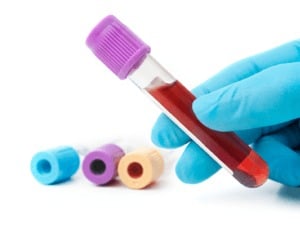Effectiveness of infusion filters to remove particulate contamination during a multidrug infusion protocol

We have investigated the ability of IV in-line filters to eliminate particulate matter from multidrug infusion lines and so prevent contamination. The impact on particle occurrence of the internal volume of the IV line below the in-line filter was then evaluated” Perez et al (2018). Abstract: The large number of drugs administered simultaneously to neonates […]
Subclavian central venous catheter complications at insertion

The aim of the present study was to determine the success of the placement of CVCs without ultrasonographic guidance and the number and type of complications associated with insertion of these” Hernández-Franco and and Martínez-Ordaz (2018). Abstract: BACKGROUND: Central Venous Catheters (CVC) are used as a tool in critically ill patients requiring hemodynamic monitoring and […]
Effect of phellodendron wet compress in treating infusion phlebitis
Aim of the study was to observe and analyze the clinical effect of phellodendron wet compress in treating the phlebitis caused by infusion” Wan (2018). Abstract: Aim of the study was to observe and analyze the clinical effect of phellodendron wet compress in treating the phlebitis caused by infusion. The research objects were 600 cases […]
Ultrasound-guided vascular cannulation in critically-ill pediatric patients

To describe the characteristics of ultrasound-guided vascular cannulation in critically-ill pediatric patients” López Álvarez et al (2018). Abstract: INTRODUCTION: Central vascular cannulation in children is a highly complex technique and poses many difficulties. Vascular ultrasound can make this procedure easier. OBJECTIVE: To describe the characteristics of ultrasound-guided vascular cannulation in critically-ill pediatric patients. POPULATION AND […]
Septic pulmonary emboli as a complication of peripheral IV catheter insertion

We describe a case of widespread cellulitis and septic pulmonary emboli as a complication of peripheral venous cannulation” Baidya et al (2018). Abstract: Septic pulmonary emboli can occur as a complication of many diseases, most common being right sided infective endocarditis. Septic emboli through a peripheral venous cannula are rarely reported in literature though central […]
Risk factors for CLABSI in adult hematopoietic cell transplant patients

There is a lack of data regarding the incidence and risk factors associated with the development of CLABSIs in the HCT population undergoing outpatient transplantation” McDonald et al (2018). Abstract: BACKGROUND: Allogeneic hematopoietic cell transplant (HCT) patients are at an increased risk of developing central line-associated bloodstream infections (CLABSIs) due to prolonged periods of myelosuppression, […]
Ultrasound-guided CVAD insertion in children weighing ten kilograms or less

This paper analyses the safety of USG percutaneous CVAD insertion in the pediatric population weighing ten kilograms or less” Vierboom et al (2018). Abstract: PURPOSE: Ultrasound-guided (USG) percutaneous insertion of tunnelled central venous access devices (CVADs) has been shown to be safe and effective in adults. However, there have been concerns over the safety of […]
Enhanced central venous catheter bundle for parenteral-dependent pediatric patients
CLABSI occurs more frequently among high-risk pediatric patients, such as those with intestinal failure (IF) who are parenteral nutrition (PN) dependent. Following an increase in CLABSI rates, a quality improvement (QI) initiative was implemented” Ormsby et al (2018). Abstract: Background: Central line–associated bloodstream infections (CLABSIs) cause substantial morbidity and increase antimicrobial use and length of […]
Management of cancer-associated upper extremity deep vein thrombosis

The objective of this study was to determine risk factors for UEDVT and the rates of recurrence and bleeding in a real-world setting” ALKindi et al (2018). Abstract: INTRODUCTION: Data on management of upper extremity deep vein thrombosis (UEDVT) in patients with cancer is limited. The objective of this study was to determine risk factors […]
Prevalence of central vein stenosis in patients referred for vein mapping

Central vein stenosis is considered to be common in patients on hemodialysis but its exact prevalence is not known. In this study, we report the prevalence of central vein stenosis in patients with CKD referred for vein mapping” Tedla et al (2018). Abstract: BACKGROUND AND OBJECTIVES: Central vein stenosis is considered to be common in […]
Recent developments in molecular based bloodstream infection diagnostic platforms

To review recent developments in molecular based diagnostic platforms used for the identification of bloodstream infections, with a focus on assays performed directly on blood samples and positive blood cultures” Peker et al (2018). Abstract: Background: Bloodstream infections are a major cause of death with increasing incidence and severity. Blood cultures are still the gold […]
Influence of needle gauge used for venipuncture in cats

The objective of this study was to evaluate the effect of different needle sizes used to obtain blood via jugular venipuncture in cats on routine measures of hemostasis” Solbak et al (2018). Abstract: Objectives: The objective of this study was to evaluate the effect of different needle sizes used to obtain blood via jugular venipuncture […]
Principles of fluid management and stewardship in sepsis

There are only four major indications for intravenous fluid administration: aside from resuscitation, intravenous fluids have many other uses including maintenance and replacement of total body water and electrolytes, as carriers for medications and for parenteral nutrition” Malbrain et al (2018). Abstract In patients with septic shock, the administration of fluids during initial hemodynamic resuscitation […]
ECG for positioning catheter tip during PICC placement in neonates

During the PICC placement in neonates, the use of ECG monitor to determine the position of catheter tip can improve the one-time success rate of placement and reduce the time spent on placement” Ling et al (2018). Abstract: OBJECTIVE: To study the efficiency of electrocardiogram (ECG) monitor for positioning the catheter tip in the placement […]
Catheter-tip thrombus formation following implantable central venous port placement

In this large cohort, younger patients and those with more advanced stage breast cancer were more associated with catheter-tip-related thrombus after port placement” Makary et al (2018). Abstract: Purpose: Catheter-tip associated thrombosis is not uncommon in patients with implantable central venous ports; however, the prevalence and clinical impact of this complication on patient management is […]
Haemodialysis central venous catheter related central venous thrombosis

Central venous catheter use is common among patients undergoing haemodialysis. Catheter related vascular thrombosis is a frequent complication, which results in catheter dysfunction” Sudusinghe et al (2018). Abstract: Central venous catheter use is common among patients undergoing haemodialysis. Catheter related vascular thrombosis is a frequent complication, which results in catheter dysfunction. This may eliminate the […]
Hemodialysis central venous catheter-associated fibrin sheath in a dog

To describe an intravascular fibrin sheath associated with a hemodialysis catheter in a dog” Langston and Eatroff (2018). Abstract: OBJECTIVE: To describe an intravascular fibrin sheath associated with a hemodialysis catheter in a dog. CASE SUMMARY: A 4-year-old dog presented for hemodialysis to treat acute kidney injury. Hemodialysis catheter dysfunction during the course of treatment […]
Case study describes superior vena cava obstruction

This case represents a rare cause of acute upper gastrointestinal bleeding in an individual with a central line for dialysis leading to SVC thrombosis” Gebreselassie et al (2018). Abstract: “Downhill” esophageal varices are formed in upper two-thirds of the esophagus as a consequence of a superior vena cava obstruction. We present a case of 55-year-old […]
Impact of a vein visualisation device on pain associated with peripheral IV placement

This study was performed to define the effect of the infrared vein visualization device support on the success of PIVC in pediatric patients aged 0 to 3 years” Inal and Demir (2018). Abstract: BACKGROUND: Pediatric nurses should be able to use techniques that increase the success rate or shorten the procedural duration of peripheral intravenous […]
OPAT clinical outcomes for persons who inject drugs

Persons who inject drugs discharged home were not more likely to have complications than those discharged to a SNF/rehab. Home OPAT may be a safe discharge option in carefully selected patients” D’Couto et al (2018). Abstract: BACKGROUND: Opioid use disorder poses a significant public health risk. Persons who inject drugs (PWID) suffer from high mortality […]
Acceptability of an integrated peripheral intravenous catheter system

The study aim is to determine the efficacy, cost-utility and acceptability to patients and professionals of an integrated PIVC system compared with a non-integrated PIVC system” Castillo et al (2018). Abstract: INTRODUCTION: Peripheral intravenous catheters (PIVCs) are frequently used in hospitals. However, PIVC complications are common, with failures leading to treatment delays, additional procedures, patient […]
Ultrasound technique results in fewer posterior wall punctures during vascular access

To determine whether a long-axis, in-plane approach to ultrasound-guided vascular access produces fewer posterior wall punctures than a short-axis, out-of-plane approach when attempted by novices without prior ultrasound-guided procedural experience” Davda et al (2018). Abstract: OBJECTIVES: To determine whether a long-axis, in-plane approach to ultrasound-guided vascular access produces fewer posterior wall punctures than a short-axis, […]
Safety of fentanyl in non-intubated infants undergoing PICC placement

To evaluate the safety of fentanyl in non-intubated infants undergoing peripherally inserted central catheter (PICC) placement” Kasirer et al (2018). Abstract: OBJECTIVE: To evaluate the safety of fentanyl in non-intubated infants undergoing peripherally inserted central catheter (PICC) placement. METHODS: A retrospective chart review of PICC placements over a 3 years’ period. We compared the 12h […]
Failure to wash hands contaminates tourniquets not contamination from patient skin

Our aim was to describe the MRSA contamination rate of phlebotomy tourniquets and faucets in a tertiary care hospital and to compare the contamination of plastic tourniquets with that of fabric tourniquets” Abeywickrama et al (2018). Abstract: INTRODUCTION: Methicillin resistant Staphylococcus aureus (MRSA) is transmitted through direct contact or fomites. The most important means of […]
Directed distraction in children reduces anxiety experienced by accompanying adults

Directed distraction can be useful for managing pain in children and it reduces the anxiety experienced by accompanying adults” García-Aracil et al (2018). References: OBJECTIVES: To assess the effectiveness of a physical method of managing pain and fear in children and anxiety in the accompanying adult during venous puncture in the emergency department. MATERIAL AND […]
Reduction of procedural pain in children with the intervention of a hospital clown

Assessing the pain experience in children receiving venipuncture with the presence of a hospital clown indicates a pain relieving effect for children older than 6 years” Kristensen et al (2018). Abstract: INTRODUCTION: Hospitalized children often describe needle-related procedures as the worst pain possible and such procedures may be emotionally traumatic. The use of hospital clowns […]
Increasing parental knowledge prior to child venipuncture procedures
The results indicated that distraction type did not have a significantly different influence on child pain-related outcome variables” Newell et al (2018). Abstract: OBJECTIVES: The aim of the current research was to compare the relative efficacy of interactive and passive distraction, with or without parental psychoeducation, on child pain and distress during a venepuncture. We […]
Variability associated with potassium blood test results

Expected variability and errors exist with potassium blood tests, even when conditions are optimized” Friedman et al (2018). Abstract: OBJECTIVE: To understand the performance of a currently used clinical blood test with regard to the frequency and size of variation of the results. PATIENTS AND METHODS: From November 29, 2012, through November 29, 2013, patients […]
Methods for determining central venous catheter depth in children

The aim of this study was to assess the most reliable method for central venous catheter (CVC) tip placement in paediatric patients” Chaskar et al (2018). Abstract: OBJECTIVE: Central venous cannulation of the internal jugular vein is difficult in paediatric patients because of the small size of the vein and anatomic variations. Many studies have […]
Two small intravenous peripheral catheters for high-rate CT contrast injection

To prospectively investigate the feasibility of using 2 small intravenous catheters for high-rate computed tomography (CT) contrast injection in patients lacking superficial veins capable of accommodating ≤ 20-gauge catheters” Son et al (2018). Abstract: OBJECTIVE: To prospectively investigate the feasibility of using 2 small intravenous catheters for high-rate computed tomography (CT) contrast injection in patients […]

